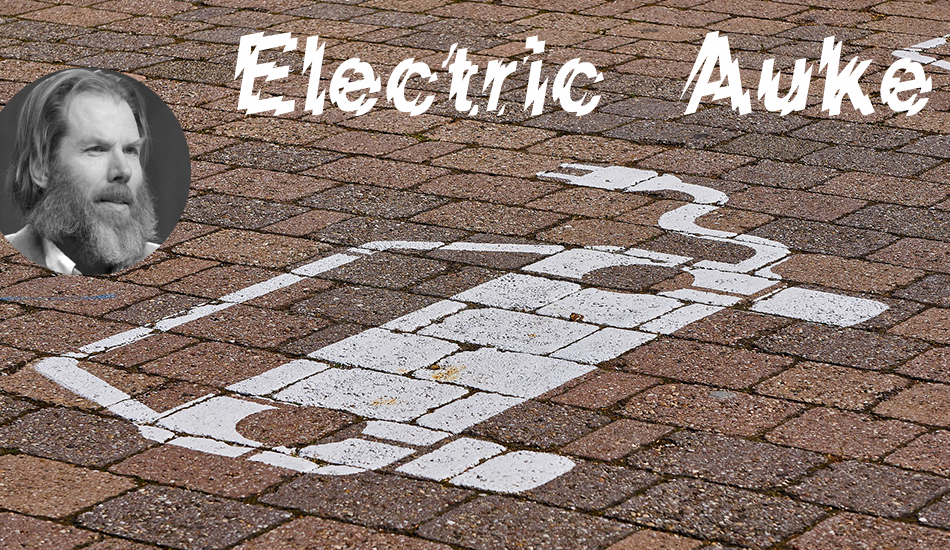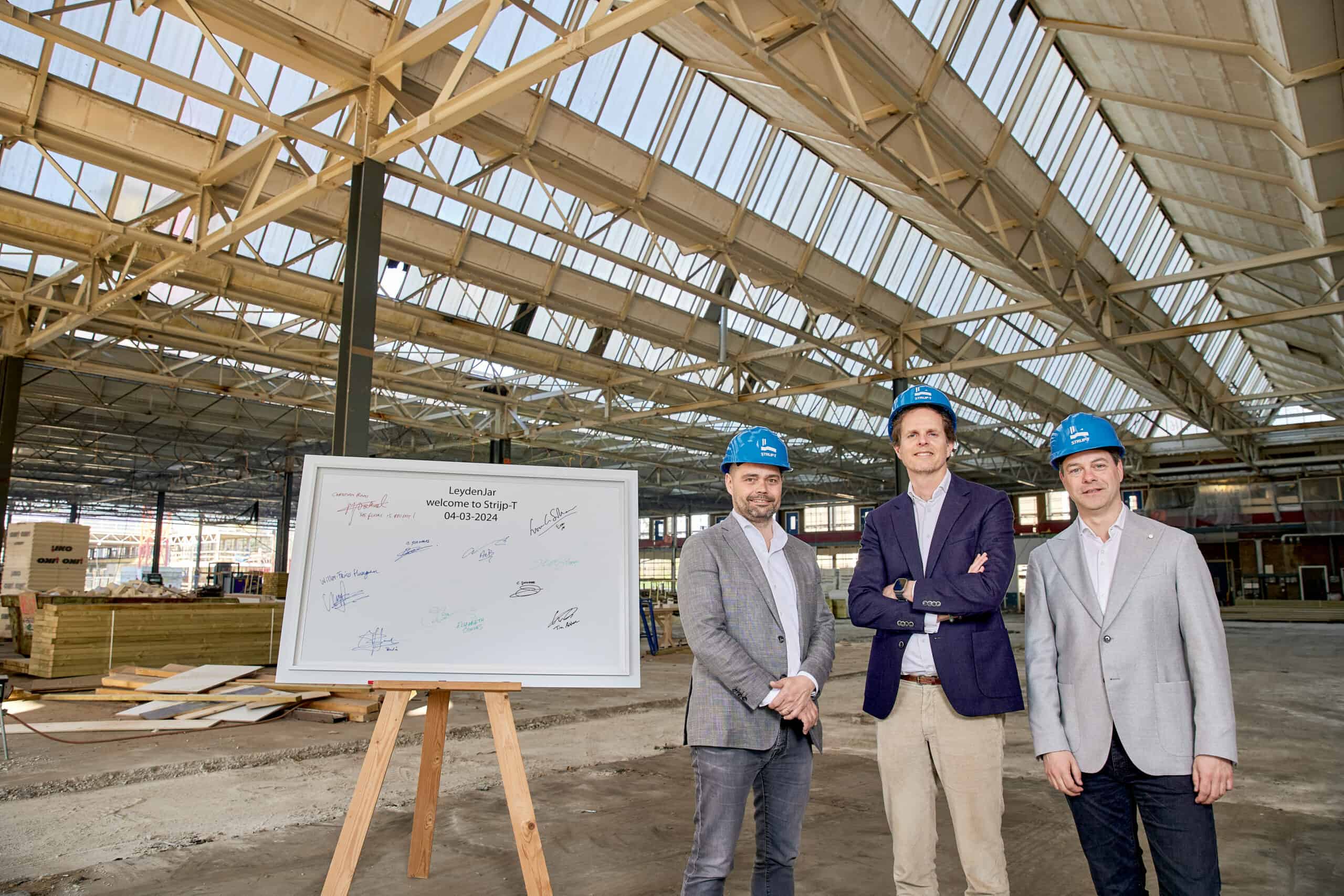
Battery breakthroughs are all around us. Each one more promising than the next. But often they involve lab studies. “Nice for a paper, but most of these so-called breakthroughs will never leave the lab”, says Auke being a realist.
Yet all sorts of things are happening in this field. Take LeydenJar, which late last month landed a substantial investment to improve their machinery and scale up the pilot plant in Eindhoven. The Eindhoven/Leiden start-up makes machines that manufacture anodes (the negative pole of a battery). In LeydenJar’s machine, graphite, which is now mainly used in anodes, is being replaced by silicon. According to the start-up, such a new anode can store up to 70 percent more energy and emit 62 percent less CO2 during the production process than the traditional pole with graphite. The LeydenJar batteries are also suitable for fast charging, which makes them attractive to car manufacturers.
Sounds almost too good to be true, right?
Auke promptly starts talking enthusiastically about the guided tour he received at the start-up. “They started with a club of 5 people and now there are 25 of them. Everyone is working on the research and on improving the machinery. Their goal is to provide added value in the energy transition. That’s the way they are in the game. It’s cool to see them so busy and to walk around. there.”
The first test batteries have a capacity of 1,350 watt-hours per liter, which, according to Auke, is about half of what a battery made with graphite reaches. “They have the world record for energy density with this. But there is a lot of nonsense in the battery world. Bold claims that researchers only achieve under tightly monitored lab conditions. These claims are not met in the field, or are too costly for mass production. LeydenJar also gets a lot of questions about this.”
Auke holds his thumb and forefinger next to his ear like a telephone and pretends to call on behalf of a car manufacturer, “‘Are you able to prove that you can reach that energy density even outside the lab?’ And they can, you know. They just send a test sample and show that it really is true. That’s cool and they do it anyway!”
Maar ze hebben nog niets verkocht..But they haven’t sold any yet…
He nods. “But the new investment is not subsidy money, it comes from partners who think this could become commercially interesting. With that €22 million, the company wants to grow to 100 people next year and continue to improve the technology. Especially the number of charging cycles for electric cars needs to be a lot higher.
According to LeydenJar, a silicon battery currently reaches about 200 charge cycles. That has to be 10 times higher and in some cases even 40 times. There is still plenty of room for improvement here. They deliberately stay in Eindhoven for this. There is a lot of knowledge here in the field of plasma physics and thin films.”
Failed machinery
It is quite amusing, Auke says, that the machine that LeydenJar is now developing further was actually already a failure. Originally, the machine was intended to make flexible solar panels. But the silicon solar panels we are now familiar with became so much more efficient and cheaper so quickly that the machine used to manufacture flexible solar panels disappeared from view.
So why does it work for batteries?
“The technology was simply overtaken and proved unsuitable for solar cells. You can store more energy in batteries with silicon than you can with graphite. We’ve known that for some time, but it was mostly in theory. The problem is that silicon expands when you store ions in it. When you discharge it – especially if you do that often – it becomes damaged and the battery degrades. Or breaks down. Now this is essentially solved by mixing silicon with graphite. As Tesla announced on Battery Day, it certainly improves things. But then LeydenJar does do it right the first time by replacing all the graphite”, Auke explains.
It works like this: in a vacuum chamber, the machine ‘grows’ a layer of silicon on copper using plasma. “Through the gas, silicon becomes a kind of vapor that precipitates on the copper. It is then as if silicon hairs are growing on the copper. The beauty of this is that these hairs are porous, so there is room for them to expand without damaging any silicon. This not only enables you to put more ions into your battery, but also helps it last longer. This development has gone fast in recent years because they are working on these silicon hairs in very smart ways at LeydenJar. We’re going to see this breakthrough in products very soon.”
The first consumer products such as wireless earphones, for example. “Then the high-end models came. It is particularly important here that a battery supplies enough energy and is not too heavy. Suppose a set of batteries weighing 10 grams costs 10 euros. That is still doable. If you want to do this for a car, you need a battery that is 10 thousand times bigger, but also considerably more expensive. That’s just not affordable.”
It’s happening right around the corner
This will change, according to Auke, as the technology develops and becomes more widely used. “Lithium batteries were also initially only used for small devices, later these became phones and laptops. Now it is also possible to drive cars, trucks and perhaps soon there’ll be small aircraft with lithium batteries. So ultimately you will also end up with silicon batteries in EVs.”
Auke sits back and looks contentedly at the camera. “It’s cool to witness this whole revolution. First we discovered coal, then oil and then years later, natural gas. Now it’s as if we are discovering a new fuel every year, that’s how fast batteries are advancing. Not just because of LeydenJar, there’s a lot more happening too. Take a look at solid state batteries where the conductive fluid becomes solid, or where cobalt goes out of the cathode. This is continuous. It’s like a boy’s book to me. It’s cool that a few people with a good idea just carry it out. It’s also great that it turns out to work and that they are now making things that will bring the world some cheer. And the great thing is: it’s happening right around the corner.”


